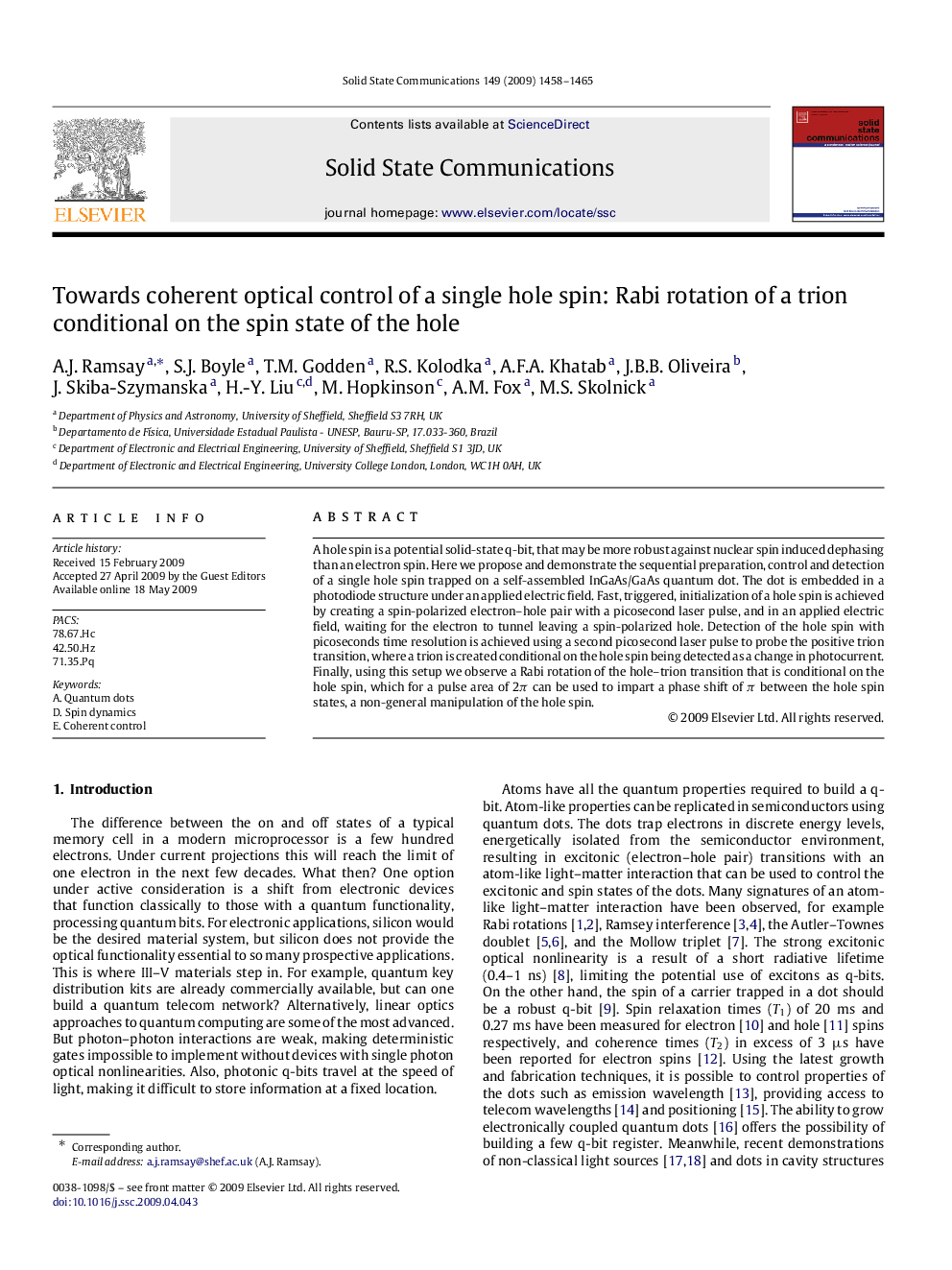| Article ID | Journal | Published Year | Pages | File Type |
|---|---|---|---|---|
| 1594925 | Solid State Communications | 2009 | 8 Pages |
Abstract
A hole spin is a potential solid-state q-bit, that may be more robust against nuclear spin induced dephasing than an electron spin. Here we propose and demonstrate the sequential preparation, control and detection of a single hole spin trapped on a self-assembled InGaAs/GaAs quantum dot. The dot is embedded in a photodiode structure under an applied electric field. Fast, triggered, initialization of a hole spin is achieved by creating a spin-polarized electron-hole pair with a picosecond laser pulse, and in an applied electric field, waiting for the electron to tunnel leaving a spin-polarized hole. Detection of the hole spin with picoseconds time resolution is achieved using a second picosecond laser pulse to probe the positive trion transition, where a trion is created conditional on the hole spin being detected as a change in photocurrent. Finally, using this setup we observe a Rabi rotation of the hole-trion transition that is conditional on the hole spin, which for a pulse area of 2Ï can be used to impart a phase shift of Ï between the hole spin states, a non-general manipulation of the hole spin.
Related Topics
Physical Sciences and Engineering
Materials Science
Materials Science (General)
Authors
A.J. Ramsay, S.J. Boyle, T.M. Godden, R.S. Kolodka, A.F.A. Khatab, J.B.B. Oliveira, J. Skiba-Szymanska, H.-Y. Liu, M. Hopkinson, A.M. Fox, M.S. Skolnick,
